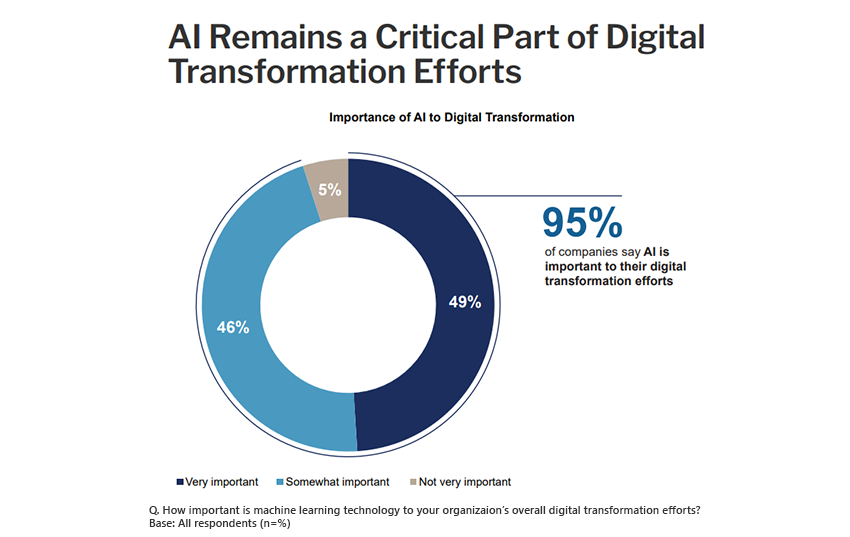
Automated and augmented approaches using machine learning (ML) are now a defining characteristic of data science and business intelligence, according to Matt Aslett, Research Director, Data, AI & Analytics, and Krishna Roy, Senior Research Analyst, Data Science & Analytics, both from 451 Research.
As organizations strive to gain valuable insights faster than before, many have focused on speeding up their data-driven decision-making processes. Many organizations require nonexperts, such as senior business decision-makers, to utilize data science and business intelligence (BI) tools. Experts, such as data scientists, however, need more time to focus on objectives that are too sophisticated to be handled by machine learning-enabled automation and augmentation.
ML is more than a nice-to-have for organizations on the cutting edge of tech
Artificial intelligence (AI) technology was cited by 95% of the 451 Alliance as foundational to their digital transformation efforts. This is due to the combination of AI and ML being used to generate large-scale data analysis, insights and automation, which are major goals of digital transformation.

AutoML adoption by nonexpert and expert users alike
AutoML was born out of data platforms with the goal of enabling those with limited data expertise to perform predictive analytics. Originally known as self-service data preparation, the technology has expanded to become one of the most pervasive forms of automation.
AutoML is widely available from specialist vendors, purveyors of purpose-built enterprise data science platforms, data platform providers, and the big three cloud hyperscalers. This technology has also expanded its uses to data experts who utilize it to complete simple, repetitive tasks.
However, regardless of skill level, AutoML and its functionality usually revolves around data pre-processing and model generation. For example, AutoML can automatically remove duplicate data, suggest data transformations, and enable feature extraction, model selection and model tuning. Additionally, users can enter inputs to guide the understanding and learning of the ML algorithms to make them more useful and effective.
Automated and augmented BI is more than a pretty interface for a limited audience
Automated BI has become a critical part of analytics in the form of data visualizations. Machine learning forms the backbone of these tools and suggests charts, graphs and other visuals, while also keeping track of user preferences.
In a survey conducted by 451 Research, nearly half (40%) of the respondents indicated that they are using or considering using automated data visualization for business and data analysis, and the same percentage (40%) are using or considering automated data visualization for senior/departmental line-of-business decision makers.

ML-driven interfaces for querying data to support BI have gained increased interest. However, some have criticized these interfaces for their inability to handle the complex analysis that would make them truly useful.
One way to improve ML-driven interfaces would be to support search and natural language queries. This would require utilization of a knowledge graph and a collection of interlinked descriptions of entities, which would function as a back end to ML-driven interfaces. This will help place data into context and provide metadata, which will allow for a semantic understanding of questions and searches by the user.
Further developments in these tools will continue to build on current interest. In a survey conducted with the 451 Alliance, 24% of respondents said they are using or considering using natural language text interfaces for data analysis and other business purposes. Moreover, 23% of respondents were using or considering using them for senior/departmental line-of-business decision-makers. Looking ahead, we can expect that a more diverse set of users will be able to utilize this technology for a wide array of analytical use cases.
Want insights on AI trends delivered to your inbox? Join the 451 Alliance.

